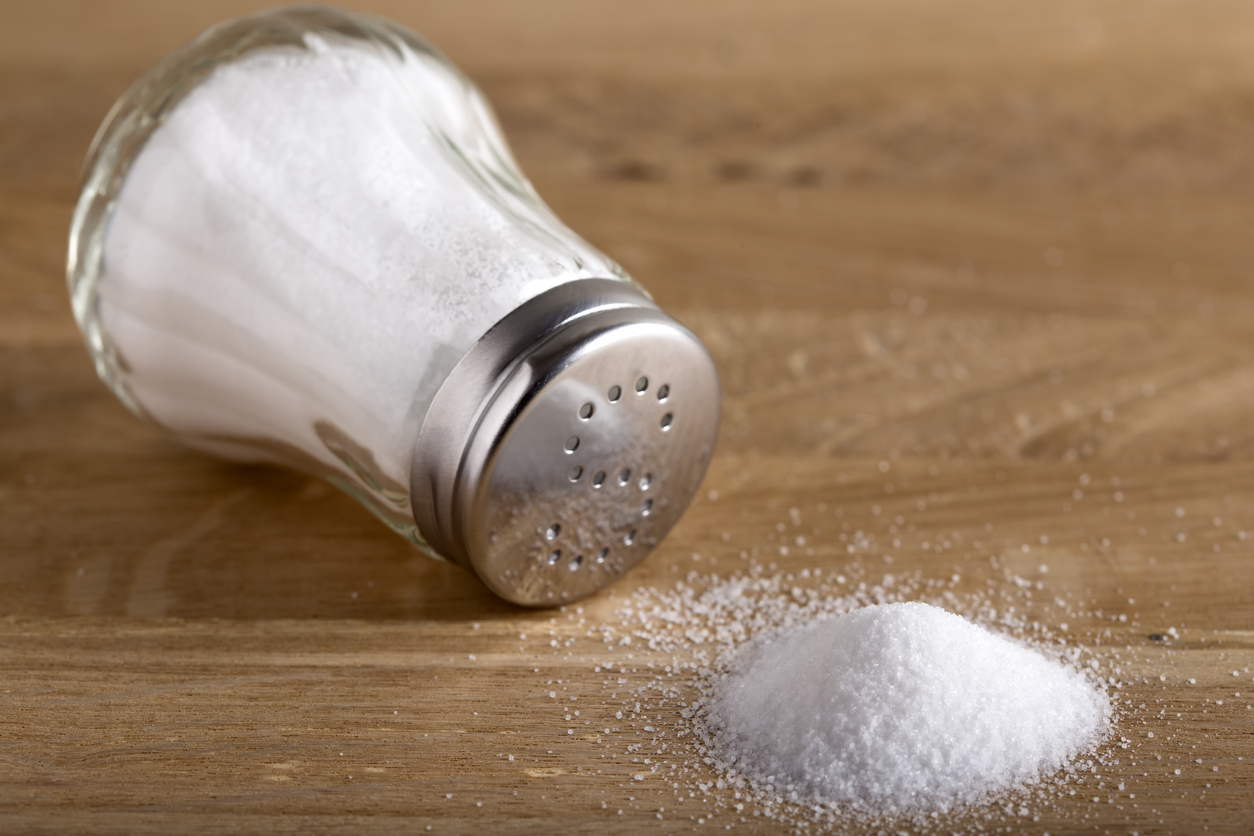Humans and salt have a long, intertwined history. Besides needing small amounts of the mineral to survive, humankind has developed a taste for salt, used it as currency, cured foods with it — even fought wars over it. But salt is a habit we need to shake. Here’s how.
Salt is plentiful in the American diet. Too plentiful. The average American consumes far more salt than the recommended daily amount and that’s particularly hard on the aging human body. Understanding the impact and knowing how to lessen it can help us now and in the future to be healthier and, well, less salty.
Salt or sodium?
First a quick word on the terms “salt” and “sodium.” They’re often used interchangeably, but they’re not the same. If you remember from chemistry class, sodium chloride is the chemical name for salt. Sodium is a mineral and it’s one of the chemical elements in salt. In the American diet, most of the sodium we consume comes from table salt.
The effects of a high-sodium diet on the aging body
Stresses organs
Time can take a toll on our organs including the kidneys which remove excess salt from our system. With age, the amount of tissue in the kidneys decreases and blood vessels in the organ harden so the kidneys filter the blood more slowly. When you consume excess salt, your kidneys must do more work to remove it and the excess fluid in the body. That fluid build-up also stresses aging hearts because it increases blood pressure and makes your heart work harder.
Amplifies chronic conditions
Reducing salt intake is recommended for most people over age 50, but it’s especially important if you’re living with a chronic health condition. Excess salt can make chronic conditions worse and can increase your risk of developing chronic disease.
- Chronic Kidney Disease (CKD) — Beyond the impact of aging on your kidneys, if you have CKD your kidneys don’t function properly and it’s even harder for them to remove excess salt and fluid from your system.
- High blood pressure — Excess sodium in the diet raises blood pressure which can increase the odds of a stroke or heart attack.
- Osteoporosis — Some studies show that salt has an effect on our bones, particularly for post-menopausal women. Regular table salt can weaken bones over time through calcium loss and that can lead to easier breaks.
- Diabetes — People living with diabetes need to monitor their salt intake as well as their sugar and glucose levels. Diabetes and heart disease are closely linked; adults with diabetes are almost twice as likely as others to die from heart disease.
How much salt should you have?
- The USDA’s 2020-2025 Dietary Guidelines for Americans recommends that healthy adults consume less than 2,300 milligrams of sodium a day.
- For people with chronic health conditions, especially heart disease, the daily intake may need to be even less.
- The American Heart Association recommends 1,500 milligrams of sodium a day for ideal heart health.
- Always talk to your doctor about what’s right for you.
3 quick tips to shake the salt habit
The solution to the problem is simple — consume less salt — but sometimes it can be tricky to discover the places where salt has been added. Try these tips to find and reduce salt in your diet.
- Reduce your use of packaged foods – About 70% of our dietary sodium comes from prepared and packaged goods. A few simple dietary changes, like eating more fruits, vegetables and plant proteins, can make a big difference.
- Eat out less – Restaurant meals are usually high in sodium.
- Read the label – It takes just a few seconds to check the sodium content in the packaged food you buy. Choose low sodium options when you can.
Mom's Meals® can help
Lowering your salt intake doesn’t mean you have to sacrifice flavor! Our tasty, lower-sodium and heart-friendly medically tailored meal options are designed by registered dietitians and crafted by professional chefs based on nutritional guidelines of the American Heart Association.
Enjoy the ease and convenience of home-delivered meals to help lower blood pressure and support heart health. Browse Mom’s Meals.



